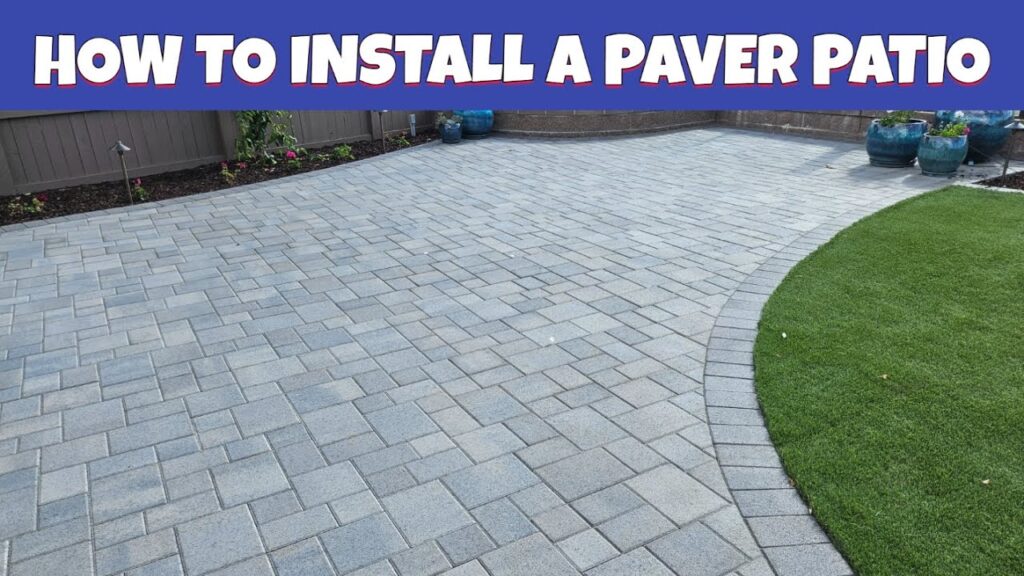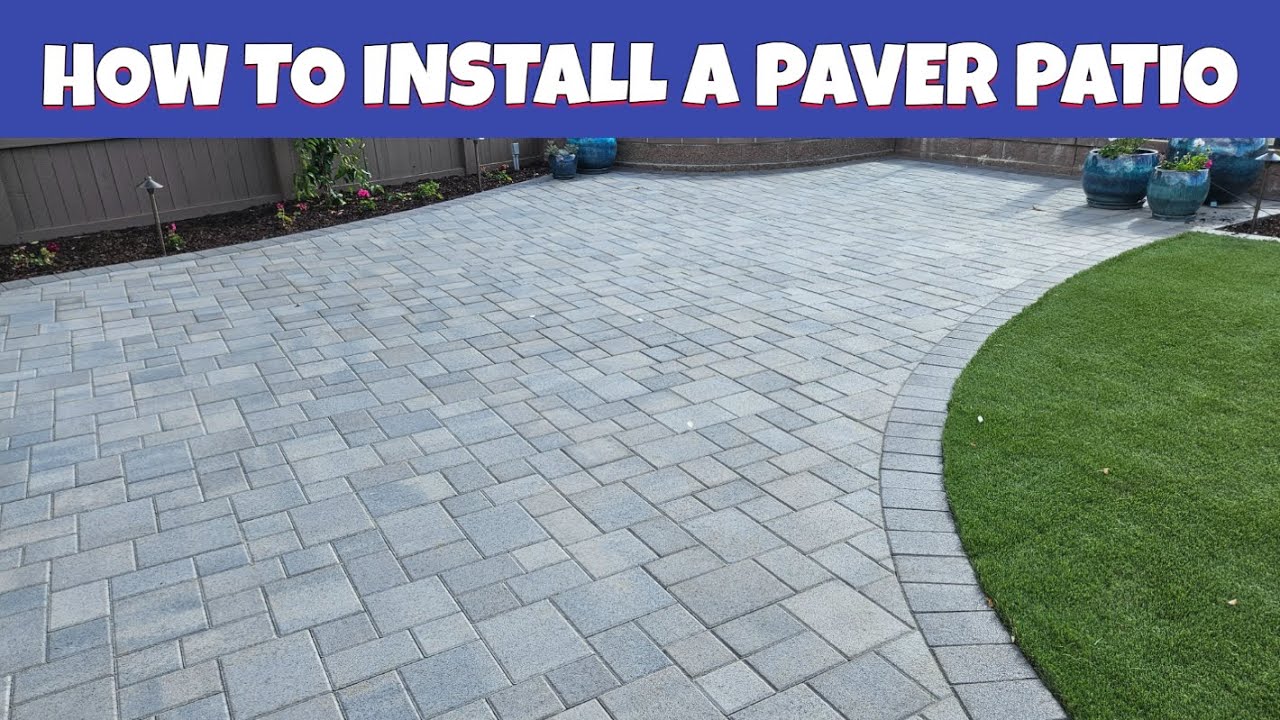
Build Your Own Patio: A Comprehensive Guide to Design, Construction, and Enjoyment
Creating an inviting outdoor living space enhances your home’s value and provides a relaxing area for entertainment and leisure. Building your own patio is a rewarding project that allows for customization and significant cost savings. This guide provides a comprehensive overview of the entire process, from initial planning and design to construction and enjoying your new outdoor haven. If you’re considering a DIY project, learning how to build your own patio is a great place to start.
Planning and Design: Laying the Groundwork for Success
Before diving into the physical labor, meticulous planning is crucial. This stage determines the aesthetics, functionality, and longevity of your patio. Several factors need careful consideration:
Location, Location, Location
The placement of your patio significantly impacts its usability. Consider these aspects:
- Sun Exposure: Determine how much sun your desired location receives throughout the day. Southern exposure offers the most sunlight, while northern exposure provides more shade.
- Proximity to the House: A patio adjacent to your house offers easy access to indoor amenities.
- Privacy: Consider existing landscaping and potential obstructions to ensure privacy from neighbors and street traffic.
- Drainage: Evaluate the existing drainage patterns to prevent water accumulation on your patio surface. Proper drainage is critical for the longevity of your build your own patio project.
Size and Shape: Tailoring to Your Needs
The size and shape of your patio should reflect your intended use and the available space. Consider these questions:
- How many people will you typically entertain?
- What type of furniture will you use (e.g., dining set, lounge chairs, grill)?
- Do you want to incorporate additional features like a fire pit or outdoor kitchen?
Common patio shapes include rectangular, square, circular, and freeform. Mark out the proposed dimensions with stakes and string to visualize the space. When planning to build your own patio, visualizing the space is key.
Material Selection: Choosing the Right Surface
The choice of patio material impacts the overall aesthetic, durability, and cost. Popular options include:
- Concrete Pavers: Versatile, durable, and available in a wide range of colors, shapes, and textures. They are a great option if you want to build your own patio with a customized design.
- Brick: Classic and charming, offering a warm, traditional look.
- Natural Stone: Provides a natural and organic feel, with options like flagstone, slate, and limestone.
- Gravel: An affordable and permeable option, ideal for informal patios.
- Composite Decking: Low-maintenance and resistant to rot and insects, offering a wood-like appearance.
Consider the climate, budget, and desired aesthetic when making your material selection. Research the specific properties of each material, including its permeability, slip resistance, and maintenance requirements. The right material is essential when you build your own patio.
Design and Layout: Creating a Functional and Aesthetically Pleasing Space
Sketch out your patio design on paper, considering the placement of furniture, walkways, and landscaping elements. Pay attention to traffic flow and ensure adequate space for movement. Consider using design software or online tools to create a 3D rendering of your proposed patio. Proper planning is key to a successful build your own patio experience.
Construction: Bringing Your Vision to Life
Once the planning phase is complete, it’s time to begin the construction process. This involves preparing the site, laying the base, and installing the patio surface.
Site Preparation: Clearing and Leveling the Ground
Begin by removing any existing vegetation, topsoil, and debris from the patio area. Excavate the area to a depth of at least 6-8 inches to accommodate the base layer and patio surface. Use a level and string to ensure the excavated area is level and consistent. Compacting the soil is crucial for a stable base when you build your own patio.
Base Installation: Providing a Solid Foundation
The base layer provides a stable and well-draining foundation for the patio surface. Typically, a base of crushed gravel or compacted aggregate is used. Spread the base material evenly and compact it thoroughly using a plate compactor. A well-compacted base is essential for preventing settling and cracking. This is an essential step when you build your own patio.
Laying the Patio Surface: Installing Pavers, Bricks, or Stone
The method for laying the patio surface depends on the chosen material. For pavers, bricks, or stone, a layer of sand is typically spread over the compacted base. Use a screed board to create a level and smooth sand bed. Place the pavers, bricks, or stones according to your desired pattern, leaving small gaps between each unit. Use a rubber mallet to gently tap each unit into place. When you build your own patio, choosing the right pattern can greatly enhance the aesthetic appeal.
Joint Filling and Compaction: Securing the Surface
Once the patio surface is laid, fill the joints between the pavers, bricks, or stones with sand or polymeric sand. Sweep the sand into the joints and compact the surface using a plate compactor with a protective pad. This helps to lock the units together and prevent movement. Filling the joints is a crucial step when you build your own patio.
Edging and Borders: Defining the Patio Boundaries
Install edging or borders around the perimeter of the patio to contain the surface material and provide a finished look. Options include concrete edging, plastic edging, or natural stone borders. Secure the edging in place using stakes or concrete. Edging is an important element when you build your own patio, as it helps maintain the structure.
Finishing Touches: Enhancing Your Outdoor Space
Once the construction is complete, add the finishing touches to personalize your patio and make it an inviting outdoor space.
Furniture and Decor: Creating a Comfortable and Stylish Setting
Choose outdoor furniture that complements the style of your patio and provides comfortable seating and dining options. Add decorative elements such as planters, outdoor rugs, and lighting to enhance the ambiance. Select furniture that is weather-resistant and easy to maintain. The right furniture is crucial when you build your own patio and want to create a comfortable space.
Landscaping: Integrating the Patio into the Surroundings
Incorporate landscaping elements to blend the patio seamlessly into the surrounding yard. Plant trees, shrubs, and flowers to provide shade, privacy, and visual interest. Consider adding a water feature or rock garden to create a focal point. Landscaping can greatly enhance the beauty of your build your own patio project.
Lighting: Illuminating Your Outdoor Evenings
Install outdoor lighting to extend the usability of your patio into the evening hours. Options include string lights, pathway lights, spotlights, and lanterns. Choose lighting fixtures that are weather-resistant and energy-efficient. Lighting can transform your build your own patio into a cozy evening retreat.
Maintenance: Preserving Your Patio for Years to Come
Regular maintenance is essential for preserving the beauty and longevity of your patio. This includes:
- Sweeping or washing the surface regularly to remove dirt and debris.
- Sealing the surface to protect it from stains and water damage.
- Repairing any cracks or damage promptly.
- Controlling weeds and moss growth.
Proper maintenance will help you enjoy your patio for many years. Protecting your investment after you build your own patio is key.
Enjoying Your New Patio: Relax and Unwind
With your patio complete, it’s time to relax and enjoy your new outdoor living space. Host gatherings with friends and family, enjoy a quiet evening under the stars, or simply unwind with a good book. Your patio is now an extension of your home, providing a place to connect with nature and create lasting memories. Now that you’ve learned to build your own patio, it’s time to enjoy the fruits of your labor!
[See also: Patio Design Ideas for Small Spaces]
[See also: Best Outdoor Furniture for Patios]
[See also: How to Maintain Your Patio]

